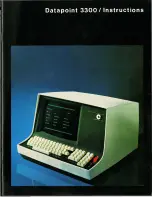
OPU-1
UNIVERSAL POWER-LINE CARRIER SYSTEM TYPE OPU-1
GENERAL DESCRIPTION - Rev 7 (May 2019)
65/67
The Management System of the OPU-1 terminals is based on web technology. This
technology is based on a Client/Server model in which the Server (OPU-1 terminal) replies
to requests made by the Client (web browser of the management computer) with data that it
has stored.
The configuration of the OPU-1 Management System requires the configuration of the
Server and the configuration of the Client, so it is necessary to enter an IP address in each
one that is compatible with the one of the other.
An IP address has a length of 32 bits and is made up of two main parts, a network number
and a host number. The 32 bits of an IP address are grouped into 4 sets of 8 bits
represented in a decimal form and separated by dots (
dotted-decimal
), as seen in
FIGURE 16.
FIGURE 16
Format of an IP address
The network number of an IP address identifies the network to which a device is attached,
whilst the host number identifies the specific device on that network. Because IP addresses
consist of four octets separated by dots, one, two, or three of these octets may be used to
identify the network number or the host number, depending on the class of IP address.
There are three classes of IP addresses, class A addresses, class B addresses and
class C addresses. These classes are distinguished by the number of bits devoted to the
network number and the host number, as shown in FIGURE 17.



































